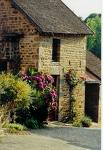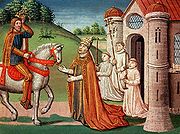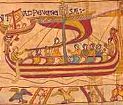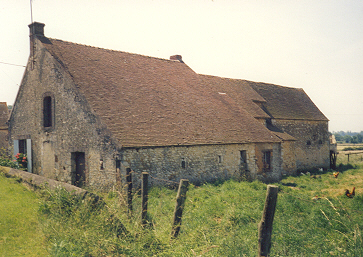
Normandy

The pope asks Charlemagne for help at a meeting near Rome.

Viking ships...

William the Conqueror...
Scenes from the Bayeux Tapestry

Homestead of Robert Giffard in Mortagne, Normandy
An historical backdrop...
After the collapse of the Roman Empire, Germanic tribes moved into the area eventually known as Normandy. Most successful of them was a group called the Franks. During this early period, kingdoms and dynasties were formed and crushed, only to emerge again with new alliances.
Charlemagne (742-814), who is part of this period of French history, devoted his life to bringing some order to the turmoil that beset the medieval Europe of his time... at whatever cost. Sabers were often drawn.
But even the greatest exit the stage, eventually. Charlemagne left his accomplishments to his son, Louis (the Pious). As is often the case, the son is not the father, and for most of the 9th and 10 centuries, the descendants of Charlemagne fought, killed, punished one another for control of one section of the empire or another. All this and the location of Normandy along the English Channel and the Seine River made it handy for the Vikings to make incursions into the area. Continual raids led to the influx of Scandanavian settlers who blended quickly with the existing culture. In doing so, the Norsemen would leave traces of their language and characteristics, but most of all their identity. Normandy is a name derived from "Northmen."
Then it was the English. From 1066 when William the Conqueror, the Duke of Normandy, declared himself King of England, the back and forth went on for centuries. Through the Hundred Years War (1337-1453) and beyond, the French struggled to push the English out of France. Needless to say, the English had very much a presence in Normandy at times. Without a doubt, they left their stamp in the form of genetic material.
The last period of upheaval that my ancestors would witness in France would be known as the War of Religions (1592-98) when the French Catholics battled it out with French Protestants (Huguenots).
Intrigues. Power struggles. Massacres. In the end, the Catholics prevailed.
So this brings us up to a time when everyday folks would leave the fields, forests and rolling hills of le Perche, and the apple orchards of Calvados, for a new existence in North America. The catalysts: Robert Giffard, the Juchereau brothers, Cardinal Richelieu and his Company of 100 Associates, and Champlain, always Champlain.